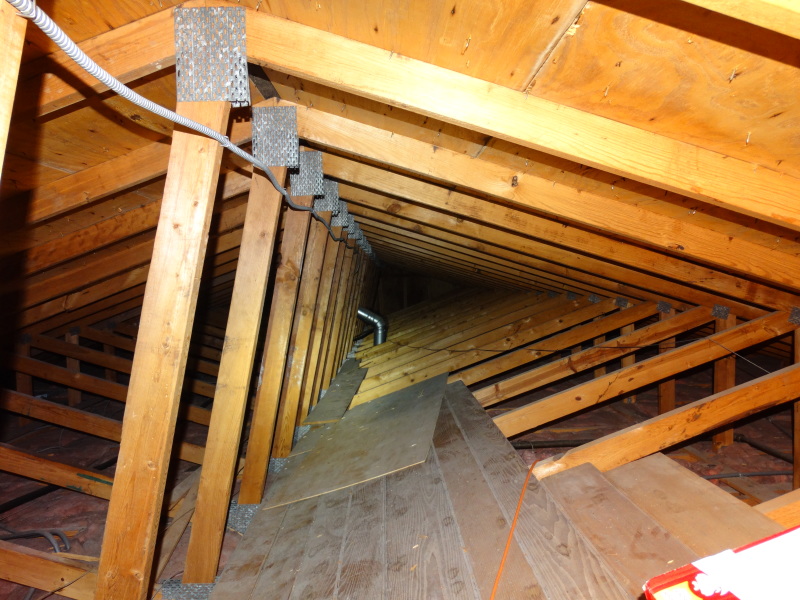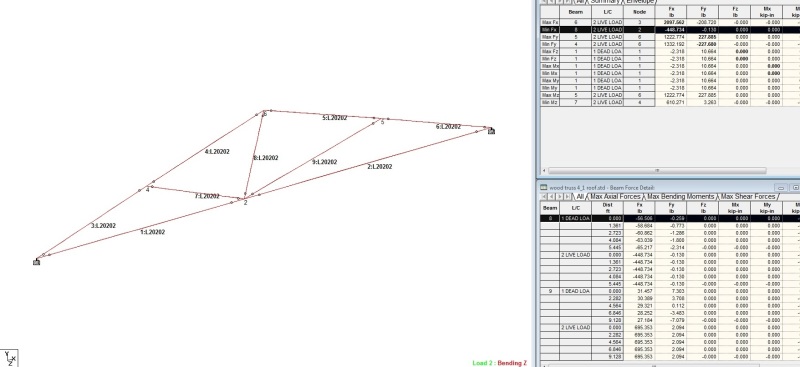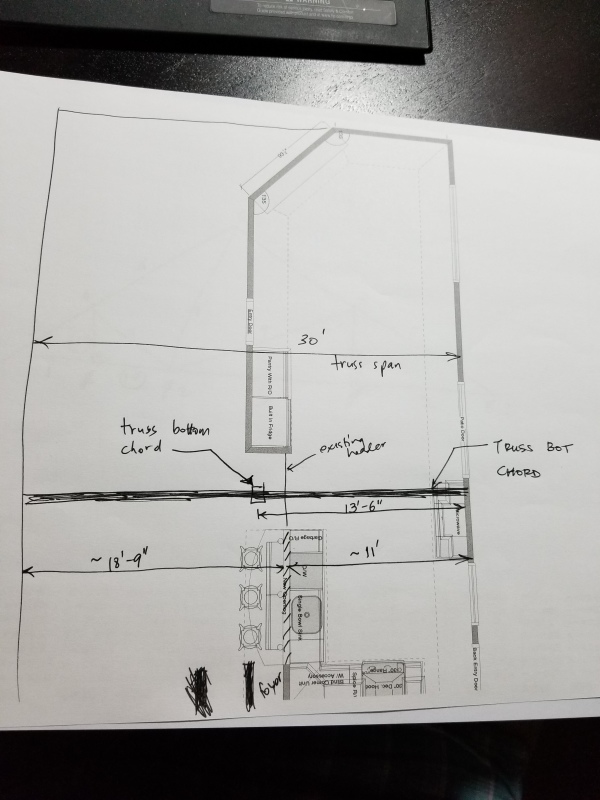mfstructural
Structural
I took a look at a residence last week for a client looking to remove a wall below a roof truss spanning 30'. From my experience these single-story homes with 30 foot spanning roof trusses are self supporting and do not require center supports. The thing that threw me off on this one was the center web member that was typically vertical and was connected to the peak was not vertical. It was was oriented at an angle to the vertical. I included pictures below.
I created a model of the truss and found that the largest compression force in the top chord is 2097 lb, max tension in the vertical web member chord is 448 pounds. The tension in bottom chord is relative low. My calculations show that a 9.5' long 2x4 can take 2600 pounds of compression. this is the governing member.
Based on my analysis, a center support, i.e., bearing wall is not required. I did not check deflection yet. I think that would be a concern. I guess my question is why would vertical web member be skewed like you can see in the pictures.
The reactions I calculated by hand are within a couple percent of the models.


I created a model of the truss and found that the largest compression force in the top chord is 2097 lb, max tension in the vertical web member chord is 448 pounds. The tension in bottom chord is relative low. My calculations show that a 9.5' long 2x4 can take 2600 pounds of compression. this is the governing member.
Based on my analysis, a center support, i.e., bearing wall is not required. I did not check deflection yet. I think that would be a concern. I guess my question is why would vertical web member be skewed like you can see in the pictures.
The reactions I calculated by hand are within a couple percent of the models.




![[idea] [idea] [idea]](/data/assets/smilies/idea.gif)
![[r2d2] [r2d2] [r2d2]](/data/assets/smilies/r2d2.gif)